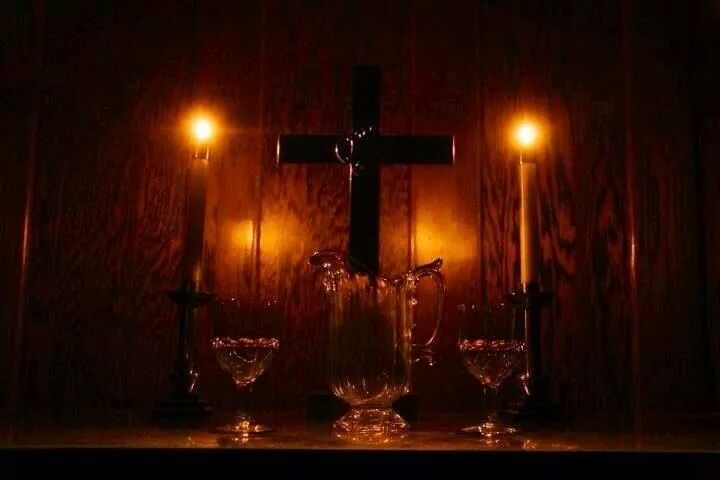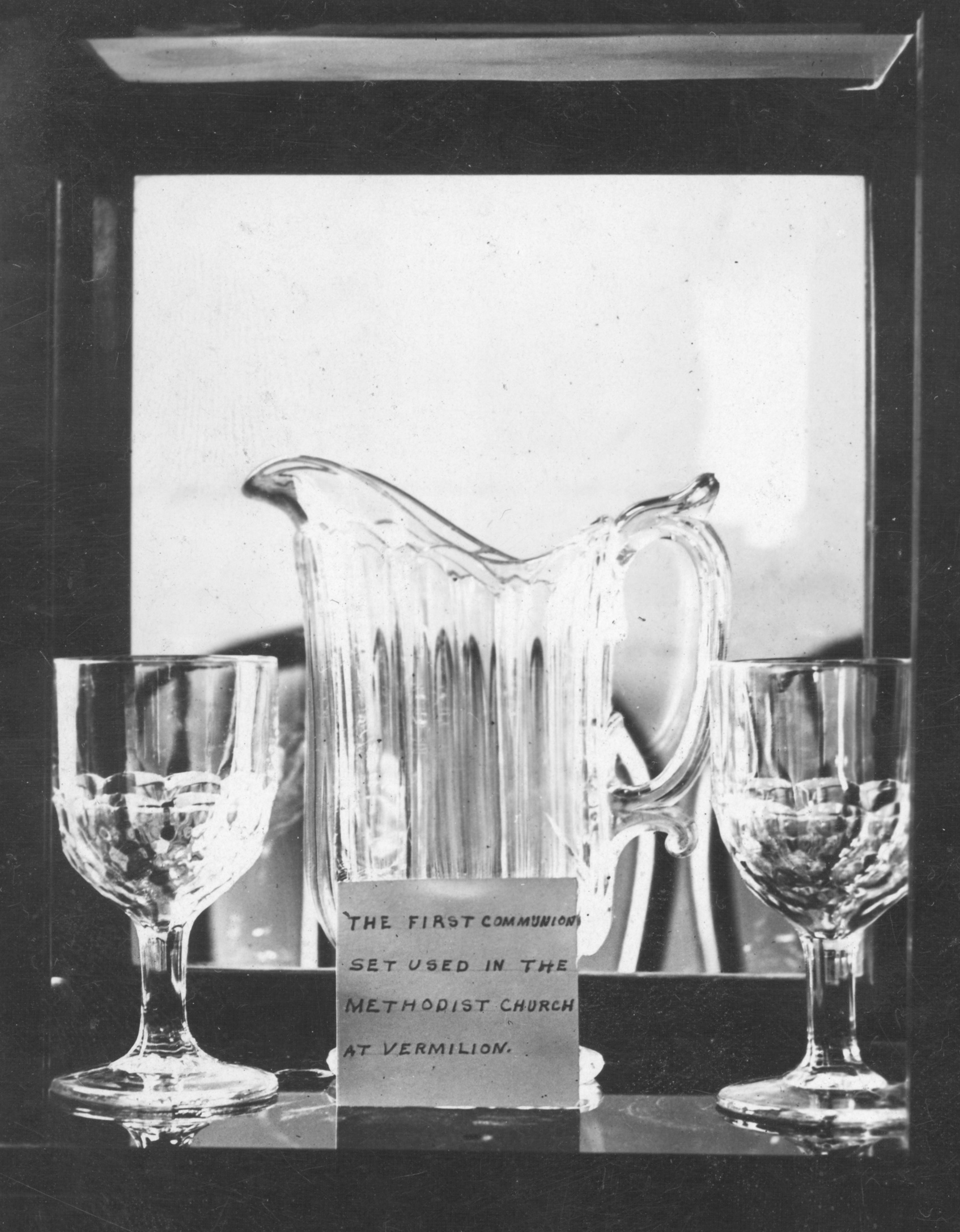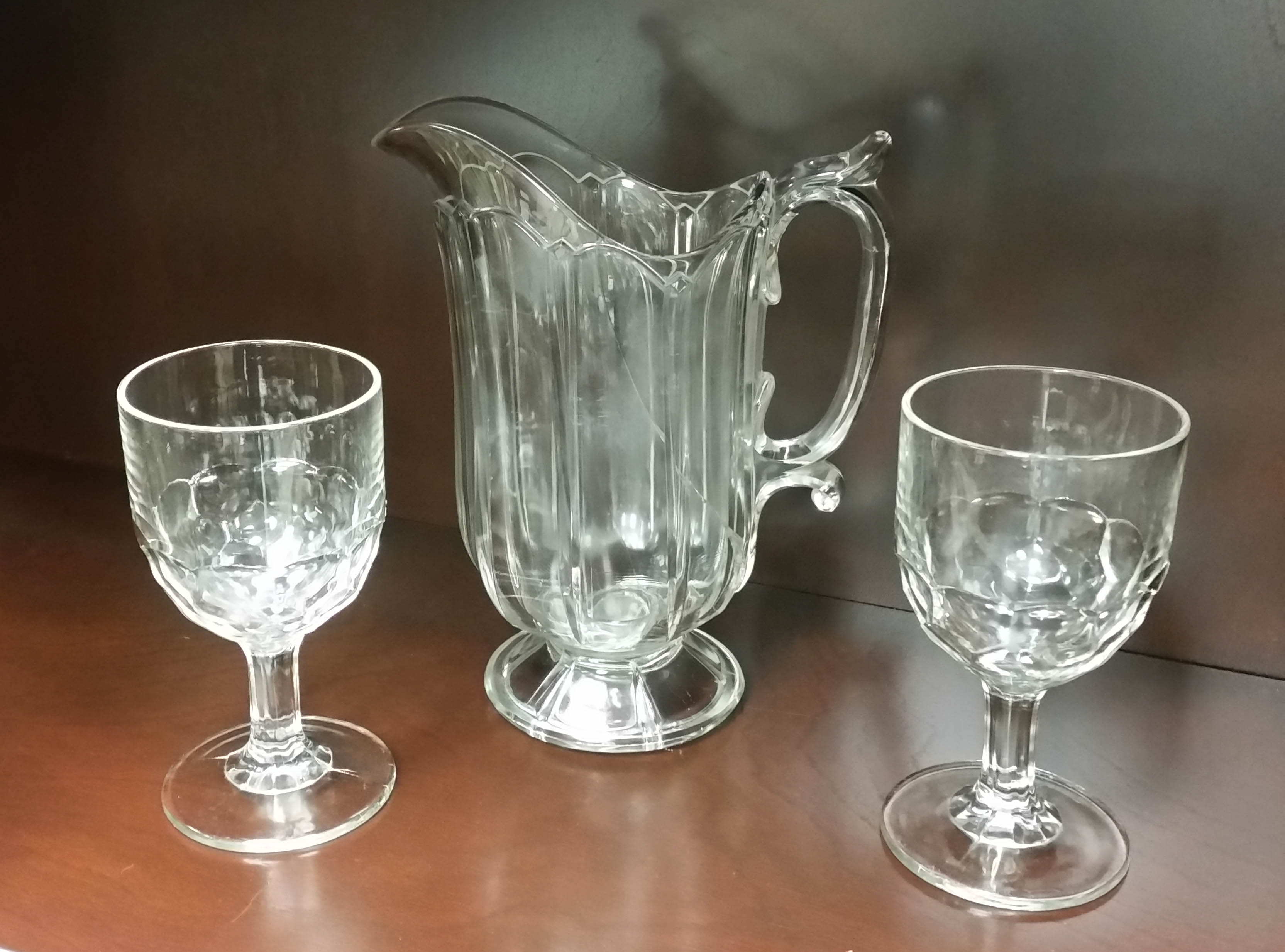
Dakota Territory communion set donated to Conference Archives
Story by Tom Thaden and Laurie Langland, Dakotas Conference Commission on Archives and History
 MITCHELL, SD--The Vermillion United Methodist Church donated to the Dakotas Conference Archives the first communion set used in Dakota Territory by the Rev. Septimus Watson Ingham. Ingham was the first Methodist pastor appointed to serve in Dakota Territory. The set is more than 150 years old.
MITCHELL, SD--The Vermillion United Methodist Church donated to the Dakotas Conference Archives the first communion set used in Dakota Territory by the Rev. Septimus Watson Ingham. Ingham was the first Methodist pastor appointed to serve in Dakota Territory. The set is more than 150 years old.
Photo: Photo by Vermillion United Methodist Church.
Special service held
The Rev. Rick Pittenger and the congregation at Vermillion UMC had a special service to commemorate the communion set. Tom Thaden, one of the members of the Dakotas Conference Commission on Archives and History, attended the service and brought the communion artifacts to the Conference archives in the McGovern Library on the campus of Dakota Wesleyan University.
The special service took place on All Saints Sunday, November 2, 2014. This was the same day that both North and South Dakota were celebrating the 125th anniversary of their admittance as states.
During his sermon, Rev. Rick Pittenger related all those who had come before in the church and commited to the preservation of the communion set and the church’s donation of it to the Conference for future generations. The artifacts were symbolically displayed on the altar and not used while communion was given to the congregation.
How it all began
On August 29, 1860, Bishop O.C. Baker of the Upper Iowa Conference in Dubuque, Iowa, assigned Rev. Septimus W. Ingham as the first Methodist preacher to be regularly appointed to the “Land of the Dakotahs.” Rev. Ingham was sent to Vermillion in October by the Sioux City and Woodbury County District.
He reached Vermillion on the evening of October 12, 1860, and put up at the Mulholland Tavern. On the following Sunday, October 14th, Ingham preached the first sermon by a Methodist minister in the region. The sermon was delivered in the dining room of a tavern that came to be known as the “Miner House” in 1862 after Capt. Nelson Miner bought out Mulholland. About twenty persons of different denominations attended the service, although Ingham reported that he found no Methodists among the group. He later went on to complete his circuit by going to Yankton, Bon Homme, Fort Randall, Sioux Falls, Richland, and Elk Point.
 Rev. Ingham returned to Vermillion early the next year. On January 13, 1861, Ingham presented the first sacrament of the Lord’s Supper with a communion set that included a glass pitcher and two glass chalices. No one knows for sure, but somehow the Vermillion church ended up with the communion set and kept possession of it for the next 50 years.
Rev. Ingham returned to Vermillion early the next year. On January 13, 1861, Ingham presented the first sacrament of the Lord’s Supper with a communion set that included a glass pitcher and two glass chalices. No one knows for sure, but somehow the Vermillion church ended up with the communion set and kept possession of it for the next 50 years.
That all changed around 1911 or 1912 when William Henry Over, the director of the museum at the University of South Dakota, came to Vermillion and joined the Methodist Church. Over, a devout Methodist, was a Sunday School teacher who participated in many other church activities throughout his time in Vermillion.
Photo: Photo courtesy of the W.H. Over Museum.
As director of the museum for nearly 40 years, Over kept the communion set in the museum for the Vermillion Methodist Church, saving it from destruction when the church burned down in 1927. When W.H. Over passed away in 1956, the first communion set in the Dakotas was given back to the Vermillion United Methodist Church where it remained for almost 60 more years.
A new home
After safely keeping Rev. Ingham’s communion set in its possession for over 150 years, the  Vermillion United Methodist Church decided to donate these important artifacts to the Dakotas Conference Archives in Mitchell. The pitcher and chalices, along with two photos, are now at the Dakotas Conference Archives.
Vermillion United Methodist Church decided to donate these important artifacts to the Dakotas Conference Archives in Mitchell. The pitcher and chalices, along with two photos, are now at the Dakotas Conference Archives.
Photo: Photo courtesy of the Dakotas Conference Commission on Archives and History.
The communion set will be displayed in a case at the Dakotas Conference Archives along with a photo and description written by W.H. Over. “The Dakotas Conference Archives and History Commission sincerely thanks the Vermillion United Methodist Church for its donation to the Dakotas Conference of the first communion set used by Methodists in the Dakotas,” said Tom Thaden, member of the Dakotas Conference Commission on Archives and History.